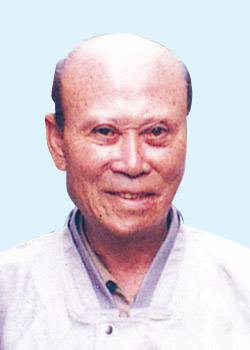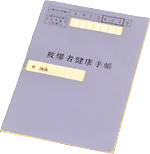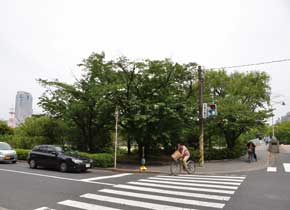Making It Possible for Overseas Hibakusha Receive an Atomic Bomb Survivor’s Certificate
Shin Young-soo

Courtesy of Shin Hyung-keun
Shin Young-soo was born in 1919 in the Korean city of Pyeongtaek, Gyeonggi Province. In 1942, he was sent to Hiroshima to work at a military pharmaceutical company. At the time, there were many Koreans living in Japan.
Shin (then, 26) encountered the atomic bomb at the Nobori-cho streetcar stop on his way to work. The upper half of his body was severely burned. He fled to Ujina and was taken to the Ninoshima relief center, then to the army hospital’s annex ward, which was located alongside the Kure Line. When the war ended, he left at the hospital’s request. However, he had no relatives to live with. The only place he could go was a house in Yahata Village (now, Yahata, Saeki-ku), which his boss had been renting out for evacuation purposes. Half-naked, hungry, sick, and cold, he headed for the house. On the train, Japanese people said cruel things to him because he was Korean, which hurt him deeply. He spent some time in a relief station in a school in Hatsukaichi and returned to his hometown at the end of the year.
Even after returning to his own country, Shin suffered from burns on his face and the aftereffects of the atomic bomb including diarrhea. He struggled financially as well. Many of the A-bomb survivors who went back to the Korea suffered like Shin from A-bomb disease and poverty. In 1967, the Association for the Relief of Korean Atomic Bomb Victims (today called the Korea Atomic Bomb Victim Association) was founded for the purposes of obtaining compensation, establishing hospitals for atomic bomb survivors, and eliminating nuclear weapons. In 1970, Shin made the decision to dedicate the rest of his life to helping A-bomb survivors in Korea. He became the chairperson of the Association. He poured his energy into a movement to demand for A-bomb survivors in Korea the same levels of assistance as survivors in Japan. In 1974, Shin went to Japan and, while receiving treatment, obtained an Atomic Bomb Survivor’s Certificate. By doing so, he opened the door to other overseas hibakusha obtaining these certificates. He passed away in 1999.



